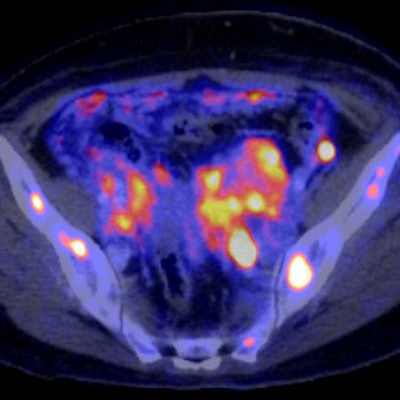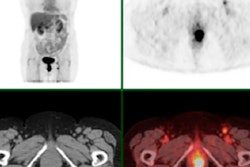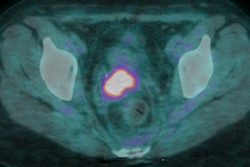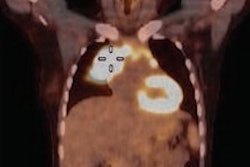
When implemented in a meaningful way, clinical audits achieve results and can be of great value when it comes to making more effective use of technology, according to the findings of a new U.K. survey about the use of PET/CT.
"A supportive team climate can help doctors to more fully engage with audit by inducing a sense of shared meaning and a culture of trust," noted lead study author Peter Ross, a doctoral candidate at the department of management at Birkbeck University of London. "An unsupportive environment constrained medical engagement at times -- evidenced in lower levels of dialogue between doctors, reduced levels of trust, increased anxiety, and a perceived culture of blame in which doctors adopted defensive reporting behavior."
From a clinician's perspective, the value of clinical audit appears to be highly context-dependent, resting on the way in which the program is implemented, he added.
The National Health Service (NHS) England PET-CT Clinical Audit Programme was introduced in 2008. Designed to drive up standards and monitor effectiveness, it has led to structural changes in how diagnostic reporting is undertaken within NHS England. However, assessing the effectiveness of this government initiative is far from straightforward as its success or failure depends on its successful assimilation and the value attached to it by practitioners, explained Ross and co-author Dr. Wai Lup Wong, consultant radiologist at the Strickland Scanner Centre, Mount Vernon Hospital in Northwood, U.K.
Their overall aim was to evaluate and better understand the value of clinical audit from the perspective of the clinician. By building on the findings of a pilot study, they sought to identify and explore the key factors that influence the level and quality of doctors' engagement and performance
The study constituted two parts: a pilot with in-depth interviews, and a longitudinal online survey sent to all reporters participating in the clinical audit program.
In the pilot study, 13 semistructured interviews were conducted to ensure a range of perspectives were represented. The questions were developed in conjunction with a critical reference group and informed by the process innovation, organizational learning, and medical engagement literature, Ross and Wong pointed out. The reference group constituted two managers, a social science researcher, an auditor, and a doctor reporting on the program. Some questions were taken from previous studies and adapted so as to accommodate the pilot study's qualitative method, but the reliability of the data collection process was maintained by the adoption of a standardized interview protocol.
The first survey was conducted in 2013, and a follow-up survey was undertaken in 2016. Both consisted of 35 five-point Likert scale questions, ranging from "strongly disagree" to "strongly agree." The anonymous survey was sent out electronically to all 59 reporters on the scheme and 58 responses were received.
The following are the key findings:
- The opportunity for collective learning and discussion of audit feedback was a key concern. The survey data showed 93% of respondents strongly agreed or agreed that auditor feedback was more meaningful when they had the opportunity to discuss audit findings, while 2% disagreed or strongly disagreed, and 5% were unsure.
- When asked if the audit program provided a culture within which knowledge could be shared, 50% agreed or strongly agreed, 21% disagreed or strongly disagreed, 29% were unsure. When asked whether clinical audit was a collaborative process, 69% agreed or strongly agreed, 19% disagreed or strongly disagreed, and 12% felt unsure.
- Asked if participation in the audit program improved reporting skills, 76% agreed or strongly agreed that audit boosted their skills, 15% disagreed or strongly disagreed, and 9% were unsure. When the same question was asked specifically about their own reporting, 48% of agreed or strongly agreed, 24% disagreed or strongly disagreed, and 28% were unsure.
- When asked whether they considered themselves leaders in reporting practice compared with those outside the program, 41% of reporters agreed or strongly agreed, 21% disagreed, and 38% were unsure.
- In general, reporters agreed that clinical audit improved clinical governance; 95% strongly agreed or agreed that clinical audit had an important governance role, while 7% disagreed or were unsure. But when asked about patient safety, 60% of reporters strongly agreed or agreed that audit improved patient safety, 5% disagreed, and 35% were unsure.
- Around 85% of reporters agreed or strongly agreed that participation in audit was reassuring, 7% disagreed, and 8% were unsure. Associated with this was the view that audit helped validate professional competence: 93% of reporters agreed or strongly agreed that participation in audit helped validate their professional competence, 7% disagreed, and 2% were unsure.
- In contrast, a number of respondents also found the audit experience stressful and threatening at the start of the program: 79% agreed or strongly agreed, 2% disagreed, and 16% were unsure. But when the same question was repeated in the present tense, the percentage of reporters who agreed or strongly agreed dropped to 27%, with 53% disagreeing or strongly disagreeing, and 5% unsure.
- Overall, levels of medical engagement increased: 66% of reporters said they were more positive about the value of audit compared with the start. Asked whether they would wish to continue to participate in future audits, even if they were not mandatory, 62% of reporters agreed or strongly agreed, 9% disagreed, and 29% felt unsure.
Ross and Wong presented their findings in an e-poster at ECR 2017 that's available on the ESR's EPOS database by clicking here.
Editor's note: The image on the home page is courtesy of Dr. Georg Bier at Eberhard Karls University Tübingen in Germany.



















